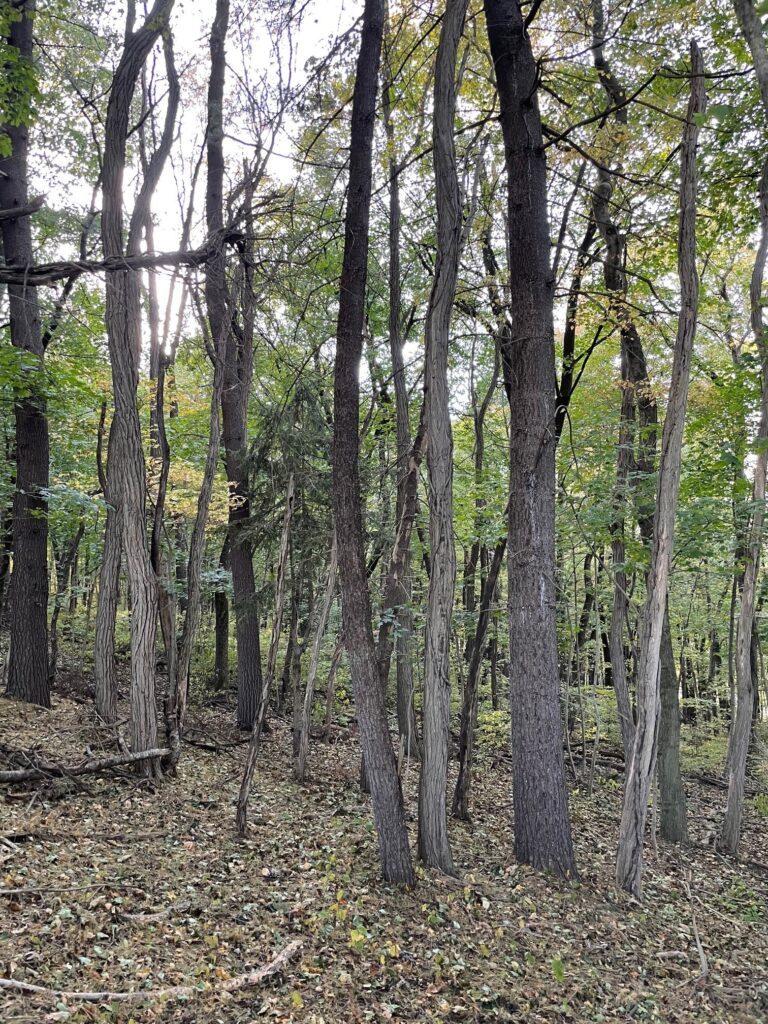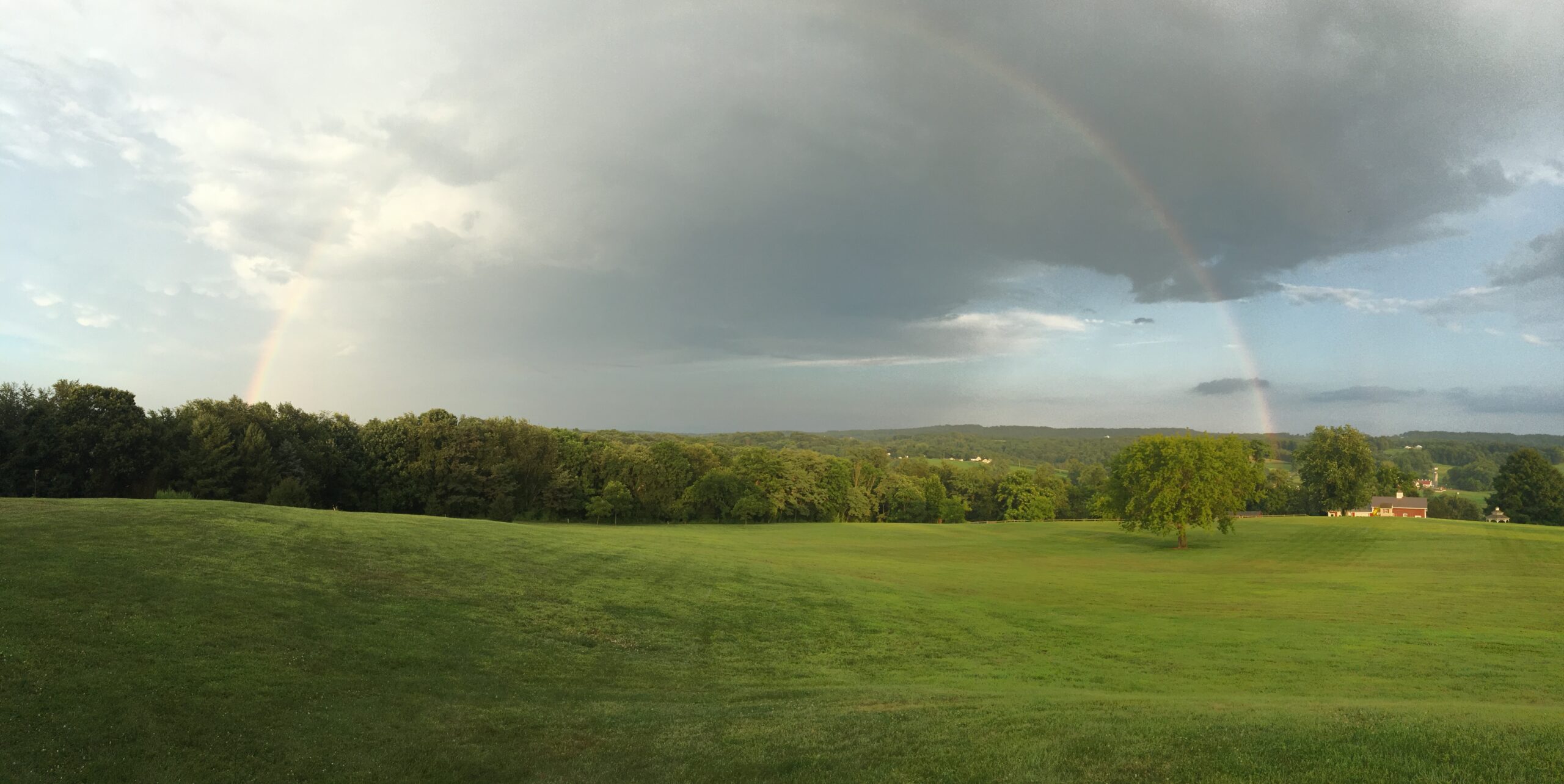
Analyzing rainfall and snowfall for microplastic pollution in the atmosphere
This four-year study recorded the lowest airborne microplastics concentration in the atmosphere in the Northeastern United States in the initial months of the COVID-19 economic lockdown
In April 2020, 42 states and territories in the United States issued mandatory stay-at-home orders. According to the United Nations, by April 2020, lockdown measures had affected almost 2.7 billion workers, representing ~80% of the world’s workforce.
This unprecedented sharp slowing of the global economy unlocked a singular opportunity to quantify the impact that economic activity has on the concentration of microplastics circulating in the earth’s lower atmosphere.
This research began collecting precipitation samples to measure micro-fiber and micro-particle contamination in May 2020 to assess whether the COVID-19 economic lockdowns had reduced the concentration of airborne microplastics. Over the next 1,366 days—with April 1, 2020 representing “Day 0,” when ~50% of the world’s population was under lockdown—this research collected 513 micro-fibers and 11,018 micro-particles from 65 rain and snow samples from a remote field in rural Pennsylvania.
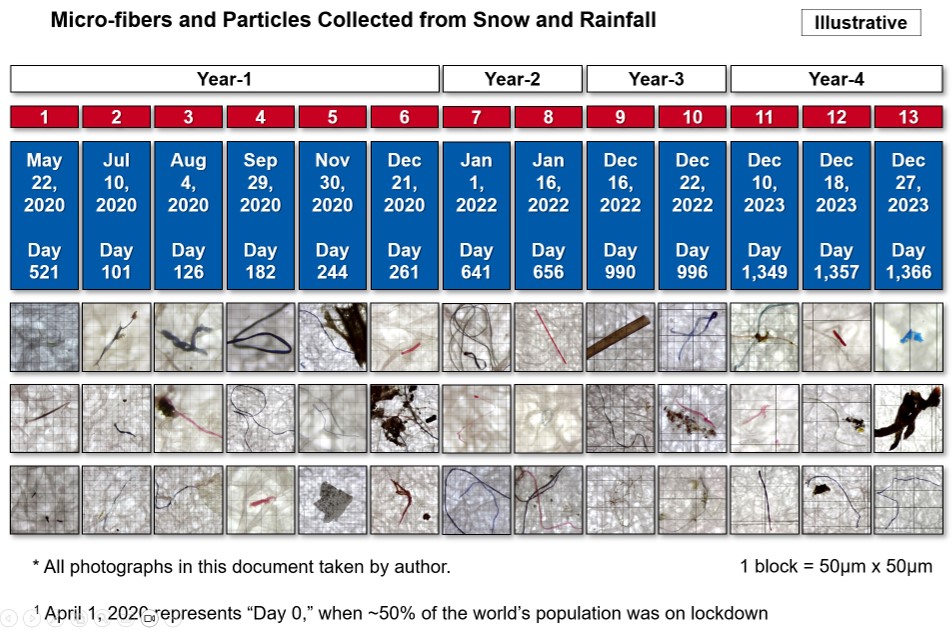
Through December 2023, micro-fibers and micro-particles entrapped by the freshly fallen rain and snow were filtered, photographed, and analyzed for physical characteristics, utilizing specialized FTIR microscopic spectroscopy to identify the composition of micro-fibers collected over a four-year period.
Findings confirmed the synthetic and processed composition of micro-fibers and that they increased over time, suggesting that concentrations of microplastics carried in the lower atmosphere are correlated to levels of economic activity.
Looking back 3.6 years (1,366 days) after the COVID-19 lockdown, airborne micro-fiber count was lowest the first 8 months, then rose as economic activity resumed
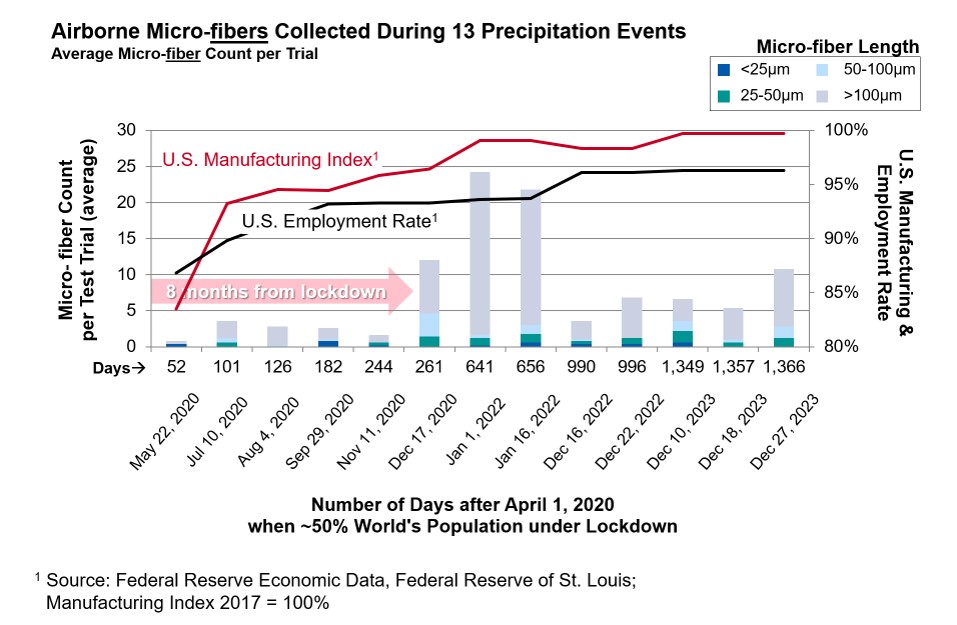
FTIR analysis of micro-fiber composition revealed increasing synthetic and processed material over time
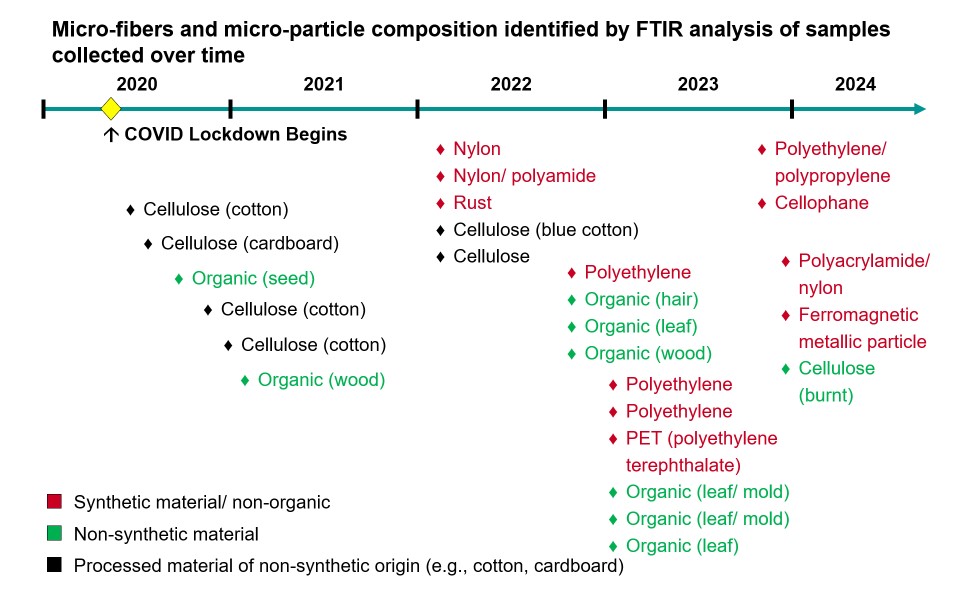
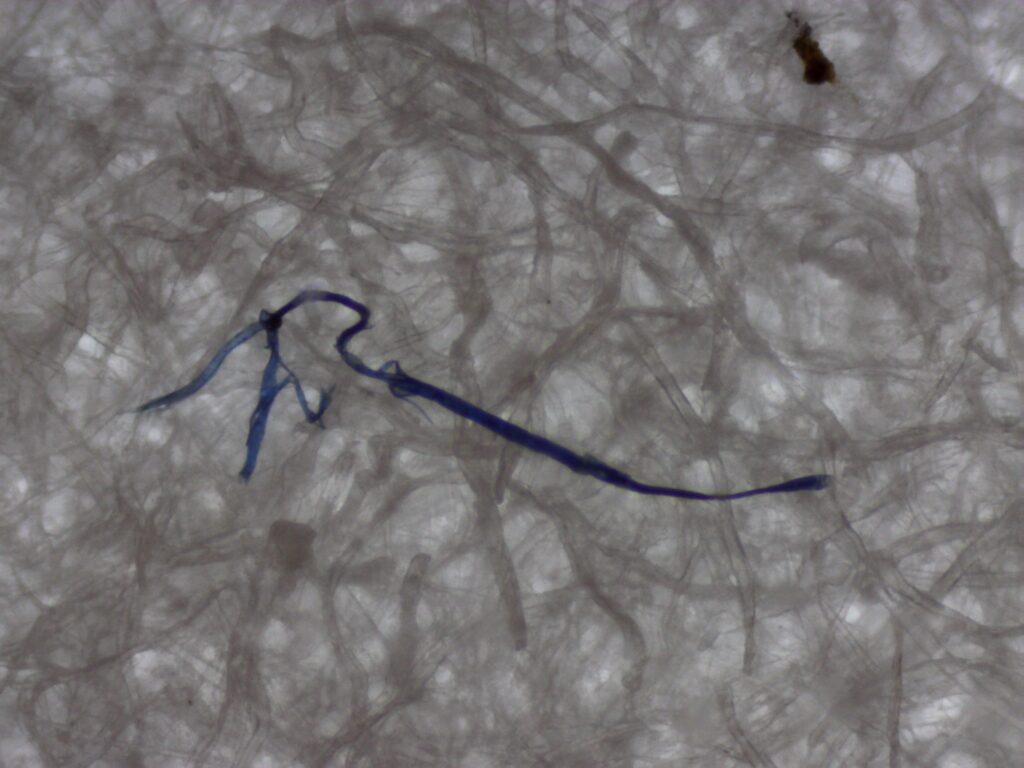
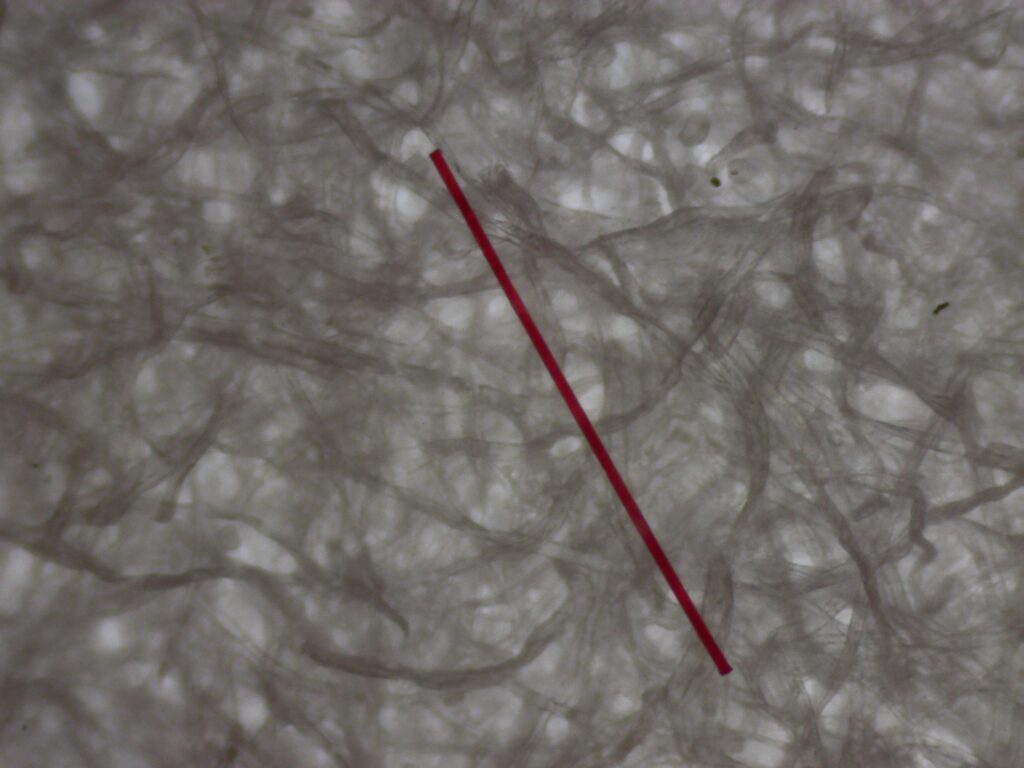
Microplastic particles and fibers have been found in increasing concentrations in the environment, representing a threat to many ecosystems.
This research began collecting precipitation samples to measure micro-fiber and micro-particle contamination in May 2020 to assess whether the COVID-19 economic lockdowns had reduced the concentration of airborne microplastics. Over the next 1,366 days—with April 1, 2020 representing “Day 0,” when ~50% of the world’s population was under lockdown—this research collected 513 micro-fibers and 11,018 micro-particles from 65 rain and snow samples from a remote field in rural Pennsylvania.
Contact Us
info@AirborneMicroplastics.org

